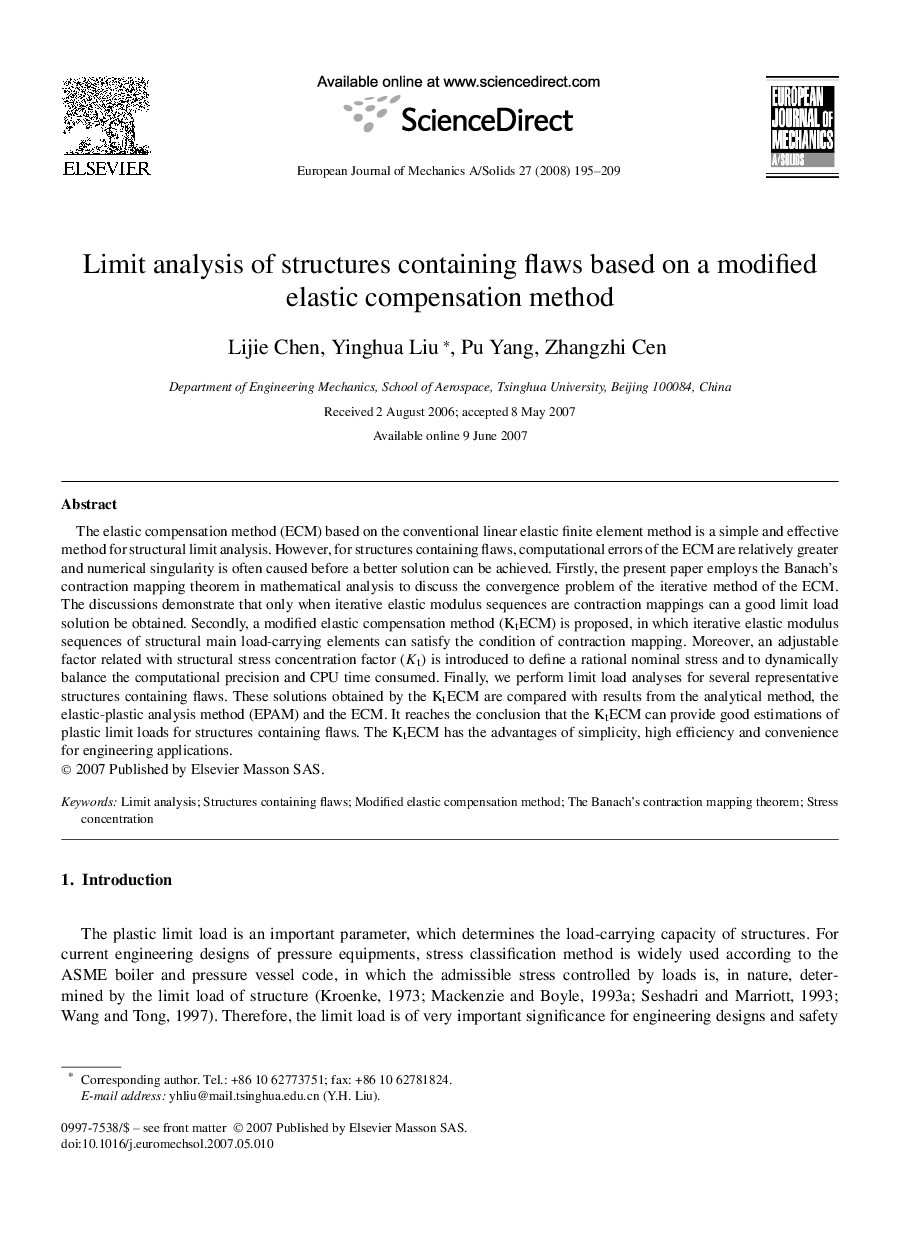| کد مقاله | کد نشریه | سال انتشار | مقاله انگلیسی | نسخه تمام متن |
|---|---|---|---|---|
| 775267 | 1463239 | 2008 | 15 صفحه PDF | دانلود رایگان |

The elastic compensation method (ECM) based on the conventional linear elastic finite element method is a simple and effective method for structural limit analysis. However, for structures containing flaws, computational errors of the ECM are relatively greater and numerical singularity is often caused before a better solution can be achieved. Firstly, the present paper employs the Banach's contraction mapping theorem in mathematical analysis to discuss the convergence problem of the iterative method of the ECM. The discussions demonstrate that only when iterative elastic modulus sequences are contraction mappings can a good limit load solution be obtained. Secondly, a modified elastic compensation method (KtECM) is proposed, in which iterative elastic modulus sequences of structural main load-carrying elements can satisfy the condition of contraction mapping. Moreover, an adjustable factor related with structural stress concentration factor (Kt) is introduced to define a rational nominal stress and to dynamically balance the computational precision and CPU time consumed. Finally, we perform limit load analyses for several representative structures containing flaws. These solutions obtained by the KtECM are compared with results from the analytical method, the elastic-plastic analysis method (EPAM) and the ECM. It reaches the conclusion that the KtECM can provide good estimations of plastic limit loads for structures containing flaws. The KtECM has the advantages of simplicity, high efficiency and convenience for engineering applications.
Journal: European Journal of Mechanics - A/Solids - Volume 27, Issue 2, March–April 2008, Pages 195-209